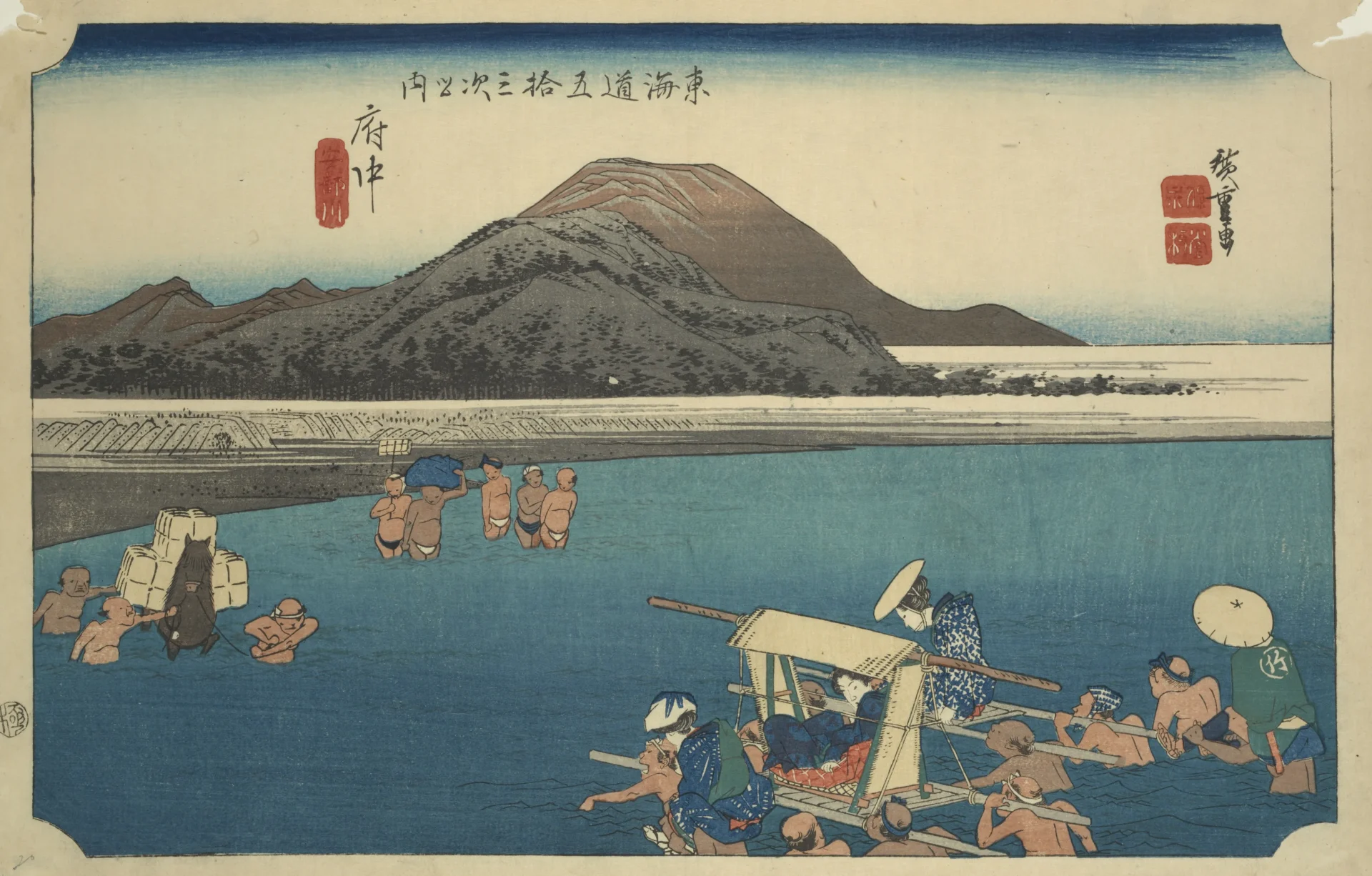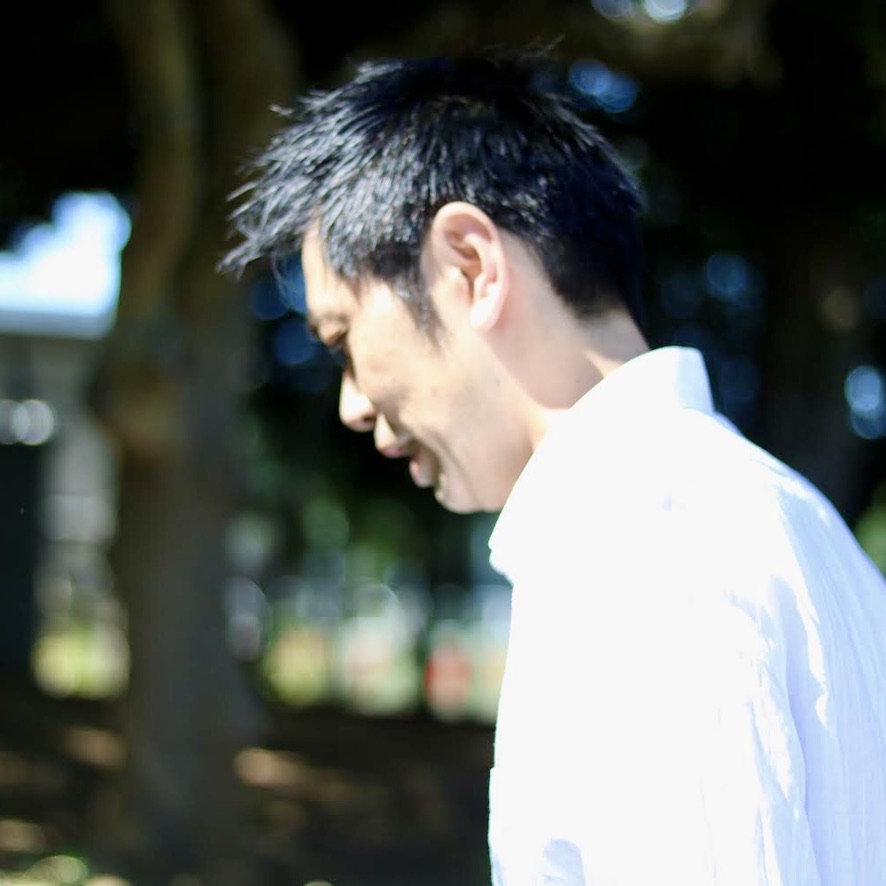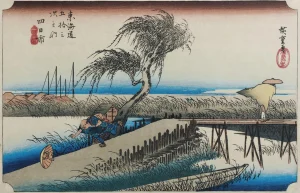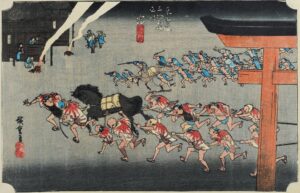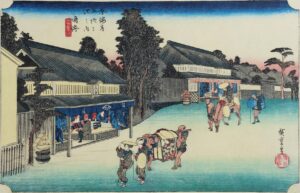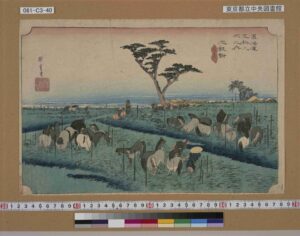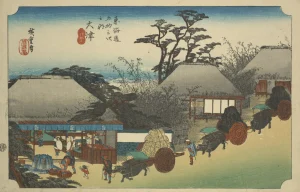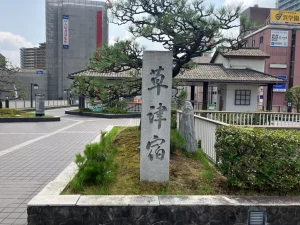This article was created using a translator. There may be expressions that are difficult to understand. If you have any questions, please check by yourself.
Please consult us about anything related to Fujieda City.
CONTACTA Walk Through Sunpu and Fuchu-juku: Tracing the Remnants of the Castle Town and Post Town Beloved by Tokugawa Ieyasu
Hello! This time, I took a walk around Fuchu-juku in Aoi Ward, Shizuoka City, and would like to share some photos and impressions from my visit.
Fuchu-juku, located roughly in the middle of the 53 stations of the Tokaido Road and designated as the 20th station, is not just a typical post town. It is also known as the castle town of Sunpu Castle, where Tokugawa Ieyasu spent his later years.
This town where the castle, the post station, and the stage of history intersect. As you walk around, you’ll find yourself discovering little bits of history here and there, like, “Oh, there’s such history here?” This time, I’ll take my time to share the charm of Fuchu-juku with you.
What kind of castle is Sunpu Castle?
First, I would like to touch on Sunpu Castle, which can be considered the center of this town.
Sunpu Castle is where Tokugawa Ieyasu spent his later years as the retired shogun. Originally, it was the site of the Imagawa residence during the time of Imagawa Yoshimoto, but Ieyasu built a large castle there.
After the Battle of Sekigahara, Ieyasu handed over the shogunate to his son Hidetada and remained in Sunpu as a “behind-the-scenes” figure, wielding political power. This period is sometimes referred to as the “Grand Elder Politics.”
Today, the site is preserved as “Sunpu Castle Park.” While the main keep no longer stands, the impressive East Gate (Higashi-gomon) and the Hitsuzi-saru Yagura (Hitsuzi-saru Tower) have been restored and are well worth seeing. The moats and stone walls are also beautifully maintained, making it a recommended spot for a stroll, even for those who are not particularly interested in history.
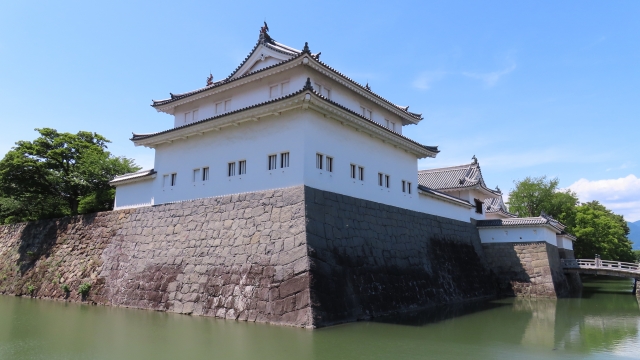
Hitsujisaru Yagura
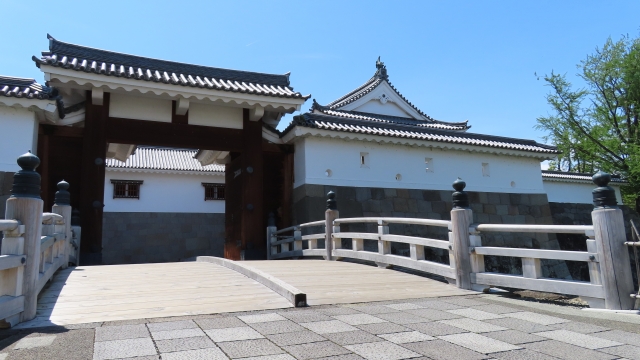
Higashi-gomon
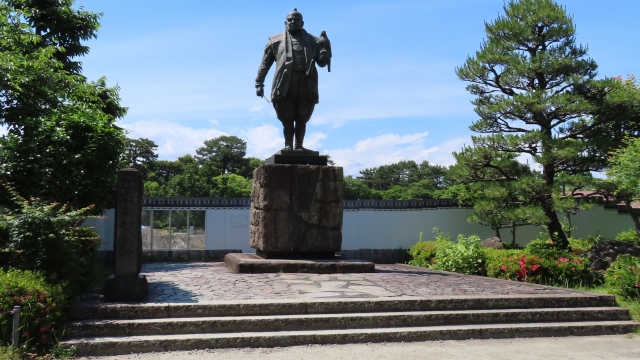
Statue of Tokugawa Ieyasu standing on the site of Sunpu Castle’s main enclosure
What kind of place is the post town of Fuchu-juku?
Now, the town that flourished as the castle town of Sunpu Castle was here in “Fuchu-juku.”
For those traveling along the Tokaido Road, this was a convenient resting spot, divided into three areas: Kamidenmachi, Nakadenmachi, and Shimonmachi, each with its own honjin and wakihonjin.
By the way, a “honjin” was an inn for high-ranking individuals such as daimyo or shogunate officials. In modern terms, it would be like an ultra-luxury VIP-only hotel.
The “Wakihonjin” served as a backup, used when the Honjin was full. This shows that even lodging facilities in the Edo period had a class system.
While the buildings no longer exist today, you can trace their history through information boards and stone monuments.

Site of the Kamidenma Honjin and Waki Honjin
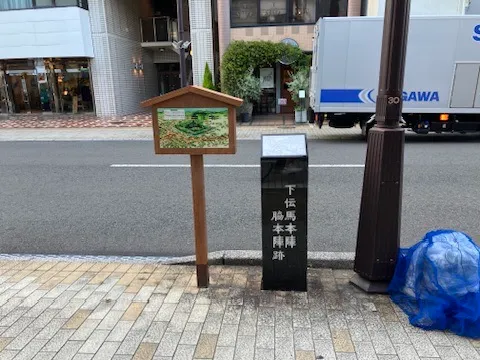
Site of the former Shimodenma Honjin and Waki Honjin
Highlights of Fuchu-juku
The main attraction of Fuchu-juku is undoubtedly Sunpu Castle Park, but there are also several other points of interest in the surrounding area, which I will introduce here.
Keyoin Temple 華陽院(けよういん)
This is the temple where Gen’ou-ni, the grandmother who raised Takechiyo (Tokugawa Ieyasu), who was held hostage by the Imagawa clan, is enshrined. Within the temple grounds, alongside Gen’ou-ni’s grave, there is also the grave of Ichi-hime, the fifth daughter of Ieyasu.
Although the grounds are compact, the well-maintained garden and serene atmosphere left a strong impression. The fact that figures associated with Ieyasu are enshrined here gives the place a slightly special ambiance.
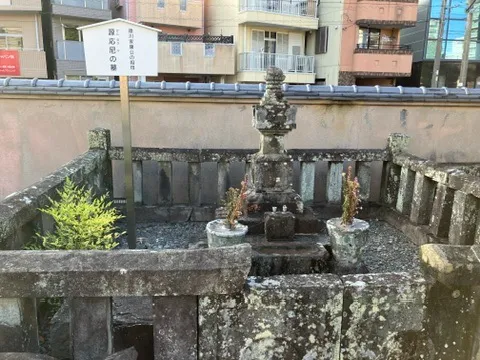
The grandmother, Gen’ouni
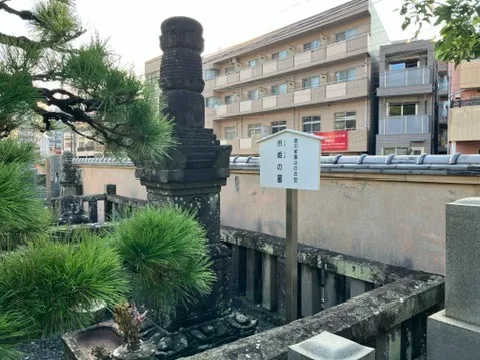
The tomb of Ichihime, the fifth daughter
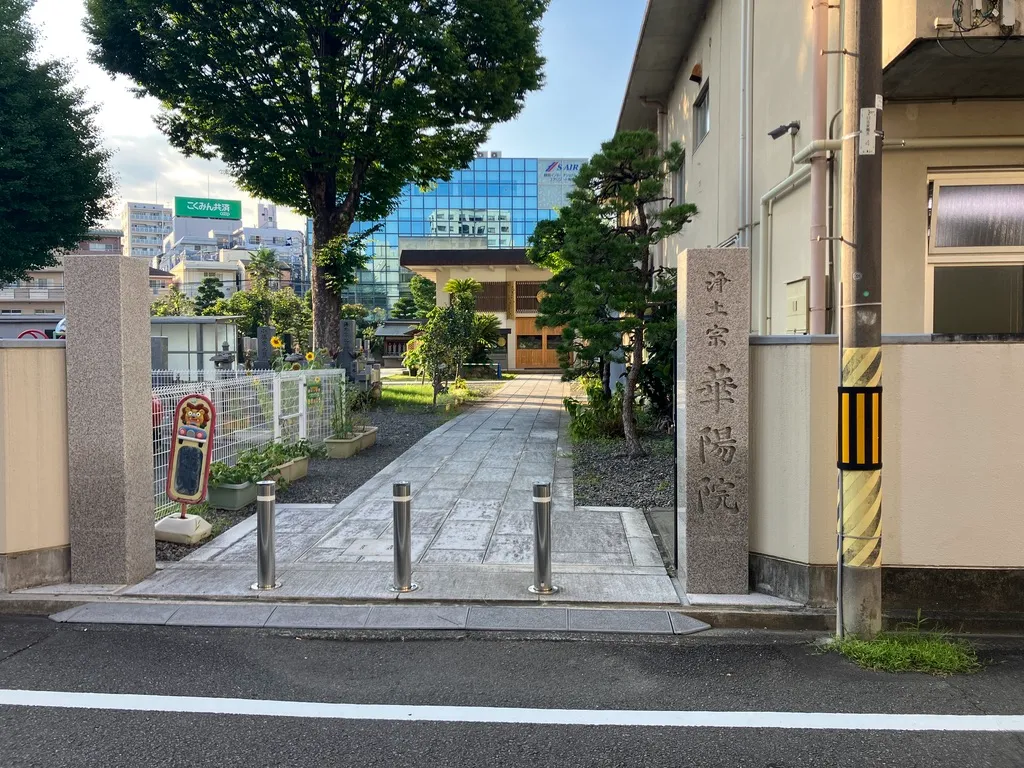
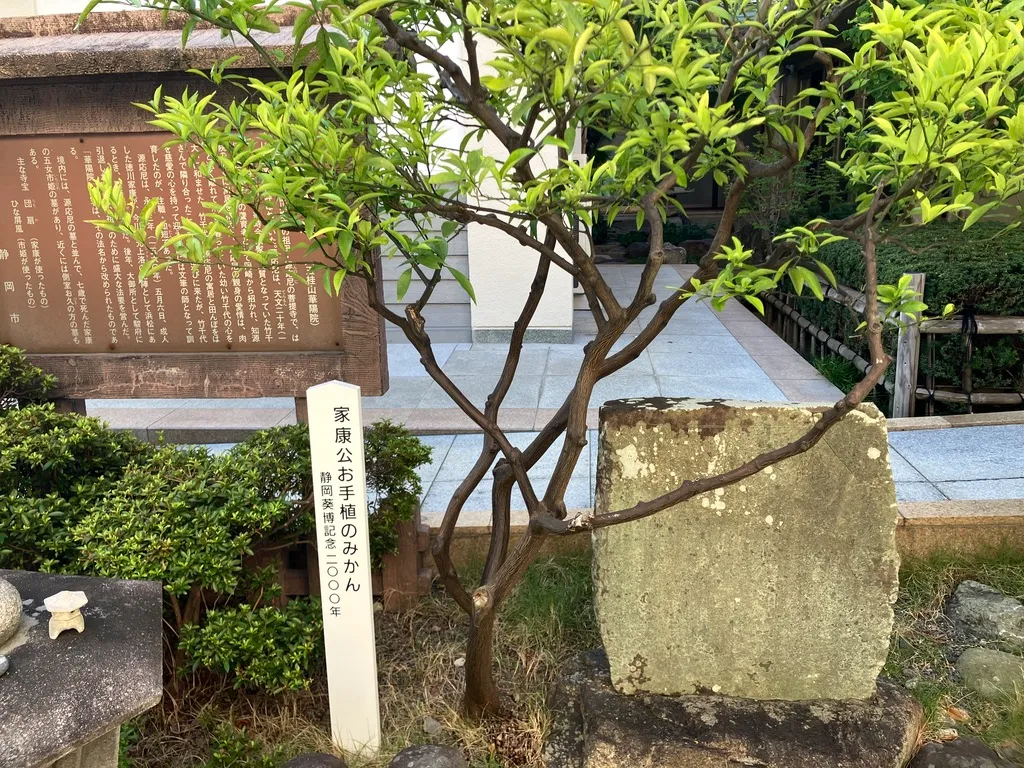
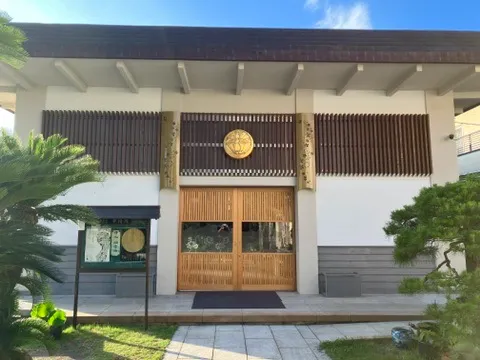
Fuchu-juku Tenma-cho Information Board
In the Nakadenmacho area, there are information boards explaining the structure of the post station at that time and what the highway looked like.
These boards are easy to understand and include illustrations and diagrams, making them perfect for introducing travelers to the area. If you are visiting Fuchu-juku for the first time, reading these boards first will make your subsequent stroll through the area much more enjoyable.
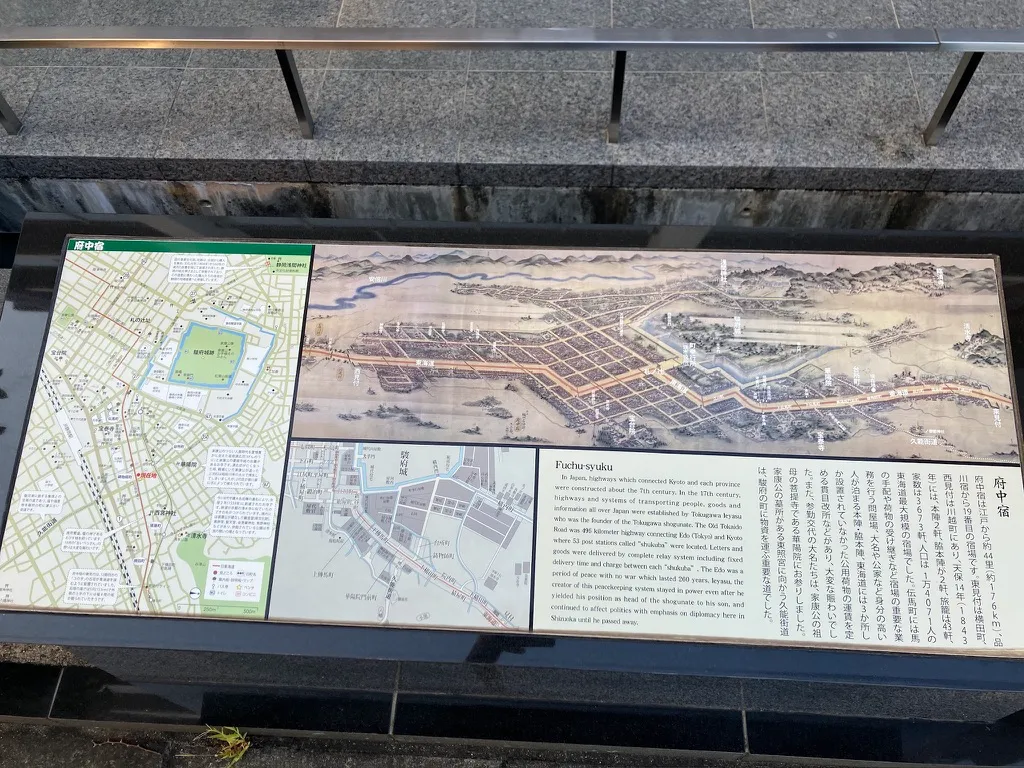
Monument commemorating the meeting between Saigo Takamori and Yamaoka Tesshu
Next is the “Saigo Takamori and Yamaoka Tesshu Meeting Monument.”
This is said to be the place where negotiations were held for the bloodless surrender of Edo Castle at the end of the Edo period. The fact that negotiations between Saigo Takamori (Satsuma) and Yamaoka Tesshu (Shogunate) took place here is an episode that history buffs will find fascinating.
On March 9, 1868, Yamagata visited Suruga carrying a letter from Katsu Kaishu and met with Saigo at this very location. Following this meeting, on March 13 and 14, Saigo Takamori and Katsu Kaishu held talks that led to the “bloodless surrender of Edo Castle.”
↓↓↓We have also seen the Saigo Takamori and Katsu Kaishu Meeting Monument in the past.
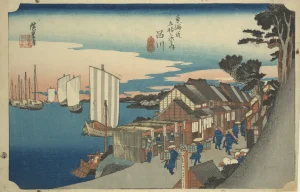
The monument stands quietly on the side of a quiet street, and it’s easy to miss, but that made it all the more moving to realize, “Something like that happened here!”
Stone pillar at the site of Tokugawa Yoshinobu’s residence
Further on, I found a stone pillar marking the site of Tokugawa Yoshinobu’s residence.
Yoshinobu was the last shogun of the Edo shogunate. It’s surprising to think that he once lived here… It makes me realize that history is closer to us than we think.
The site of Tokugawa Yoshinobu’s residence is now a restaurant called Ukigetsuro.
It’s too expensive for a commoner like me, so please go and visit it for me (laughs).

A town where history is right next to everyday life
The Fuchu-juku we walked through this time was not just a “former post town,” but a place packed with some of the most intense episodes in Japanese history, from Tokugawa Ieyasu’s Sunpu Castle to important negotiations at the end of the Edo period and the last shogun, Tokugawa Yoshinobu.
Throughout the town, there are scattered stone monuments and information boards, turning a casual stroll into a historical exploration. Located in the heart of Shizuoka City with excellent access, it’s also a great spot for a quick weekend outing.
Even if you’re not particularly knowledgeable about history, simply walking around, observing, and taking photos can be enjoyable. Why not take a step forward and experience the Tokaido Road that people of the past once walked, feeling its lingering presence?


